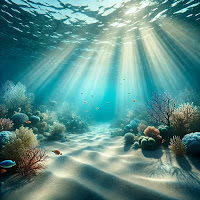Mastering Split-Toning for Unique Underwater Color Effects

An AI-generated image demonstrating Split-Toning Split-toning is often regarded as one of Lightroom's hidden gems. It provides excellent opportunities for creativity, especially for underwater photographers eager to enhance their images with a touch of artistic flair. This advanced technique enables photographers to selectively apply various hues to the highlights and shadows of their images, resulting in vibrant color gradients. These gradients not only elevate the overall mood of the photograph but also skillfully guide the viewer’s eye toward particular areas of interest in the composition. As we delve into the world of split-toning, I will take you through the essential steps to master this technique in Lightroom. We will explore leveraging the latest AI tools and incorporating efficient keyboard shortcuts to streamline your editing workflow and maximize creativity. I will also present five examples explicitly tailored for underwater photography to deepen your understanding of ...


